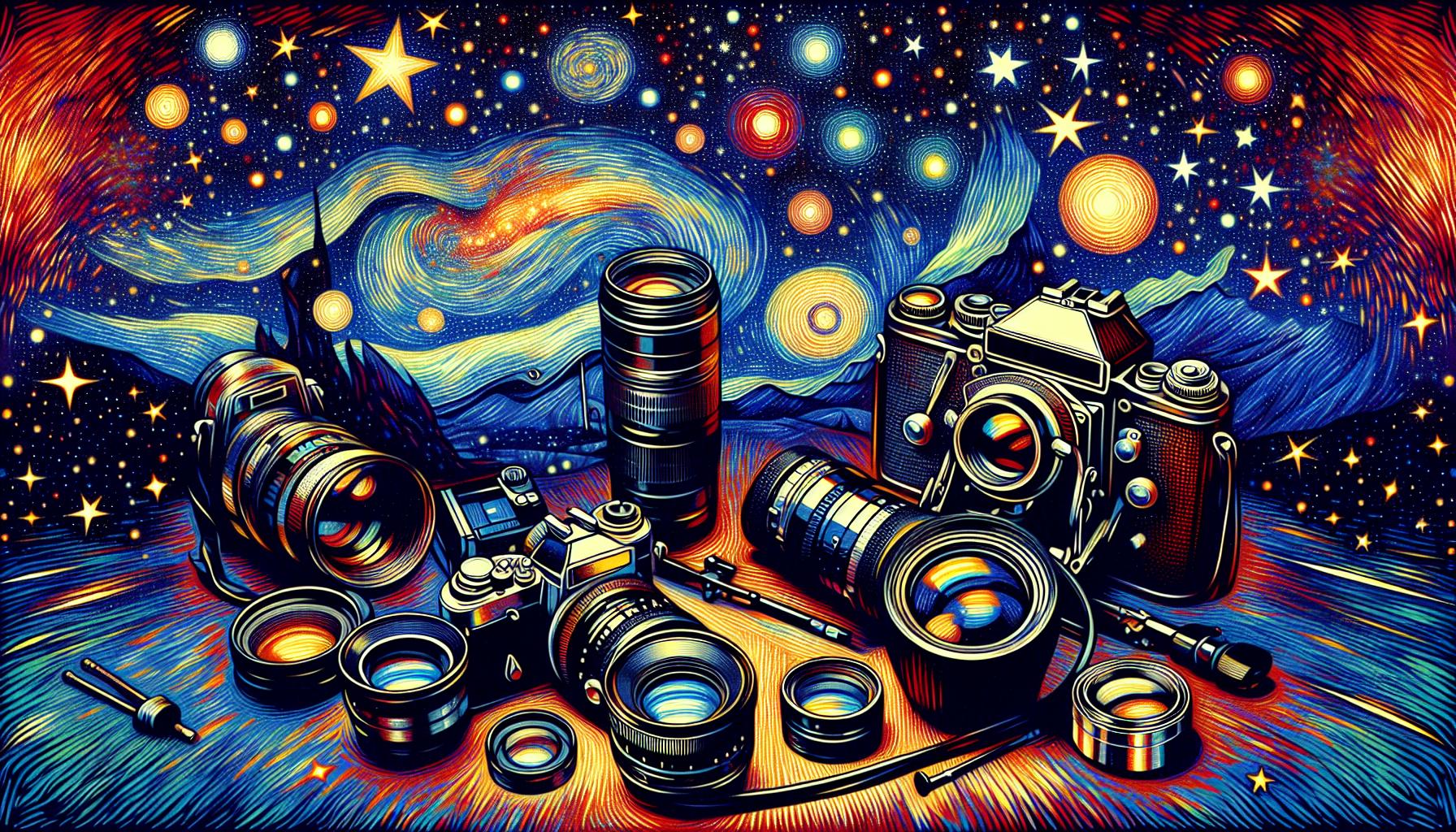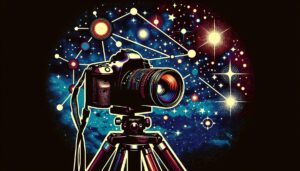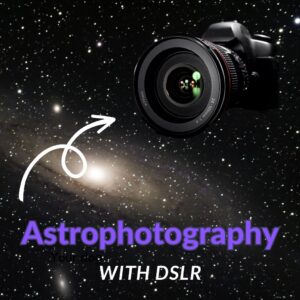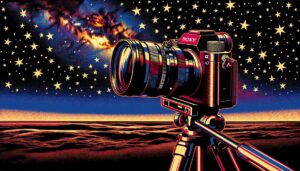This site contains affiliate links to products. I may receive a commission for purchases made through these links.
As an experienced astrophotographer, I’ve been asked countless times, “What’s the best camera for astrophotography?” It’s a question that doesn’t have a one-size-fits-all answer. The choice depends on your specific needs, your level of experience, and of course, your budget.
Astrophotography is a unique field that combines the wonders of the night sky with the art of photography. It requires a camera that can capture light effectively, handle long exposures, and produce high-quality images. Over the years, I’ve experimented with various cameras and I’m eager to share my insights with you.
Factors to Consider When Choosing a Camera for Astrophotography
First, the camera sensor’s quality is crucial. It should provide high resolution and good dynamic range. These attributes guarantee that the camera can effectively capture light in near-total darkness and can handle long exposures without compromising the image quality.
It’s essential to have manual control over the settings. That includes ISO, aperture, and shutter speed. Why? With manual controls, you can make more precise adjustments according to the celestial object you are capturing and the atmospheric conditions.
Built-in noise reduction technology and cooling features also matter. When shooting long exposures, cameras can generate noise which may affect the quality of your image. A camera with built-in noise reduction technology can minimize this issue. Similarly, cooling features in a camera are good to have feature. This lessens the overall thermal noise generated due to the prolonged use of camera sensors.
Also, don’t forget about the weight and size of the camera body. Because astrophotography often involves traveling to remote locations with little or no light pollution, a camera that’s compact and easy to carry over long distances is a definite advantage.
Finally, another significant factor to keep in mind is your budget. While it’s normal to want the best gear, sometimes our financial capacity may limit our choices. But remember, more expensive doesn’t necessarily mean better, and there are plenty of affordable options out there that can get the job done effectively.
So, those are some of the key considerations when choosing your astrophotography camera. Keep them in mind as you explore and compare the various options available on the market.
Popular Camera Brands and Models for Astrophotography
When delving into the world of astrophotography, we’ll find several camera brands that perform exceptionally well in low-light environments. Among these, some have gained a reputation for their superior image quality and high-performance features.
Nikon, for instance, has a strong foothold in the field of astrophotography. With its well-known D850 model, it’s renowned for its high resolution and overall image quality. Its backside-illuminated full-frame image sensor plays a significant role in its ability to capture stunning low-light images. With an impressive 45.7 megapixels and ISO speeds extendable up to 102400, it certainly impresses.
On the other hand, Sony brings its A7S III to the table. This model is a favorite among night sky photographers. It offers beautiful detail even in high ISO settings and features a speedy BIONZ XR processing engine making it capable of noise reduction and delivering impressive image quality.
Last but not least, Canon shouldn’t be forgotten. Their EOS Ra mirrorless camera, designed specifically for astrophotography, includes a modified IR filter and 30x live view magnification for enhanced clarity of cosmic phenomena.
While it’s essential to choose a camera that offers top-notch low-light performance, high ISO capabilities, and exceptional image quality, it’s equally important to consider other crucial factors like the manufacturer’s reliability, after-sales service, and the availability of additional gear. After all, astrophotography isn’t just about the camera but also the entire setup.
Let’s consider the following camera specifications in a quick view.
| Camera | Sensor | Resolution | ISO Range |
|---|---|---|---|
| Nikon D850 | Full Frame | 45.7 MP | 64 – 102400 |
| Sony A7S III | Full Frame | 12.2 MP | 80 – 409600 |
| Canon EOS Ra | Full Frame | 30.3 MP | 100 – 40000 |
The Best Budget-friendly Options for Astrophotography
Avoiding a hefty price tag doesn’t necessarily mean compromising on performance! Astrophotography on a budget can still deliver fantastic results. Here are a few camera options that marry affordability and quality effectively.
Nikon D5300
As a starting point, we’ve got the Nikon D5300 – an entry-level DSLR with a 24.2-megapixel resolution. It’s quite compact and lightweight, which is an advantageous feature in the field. The design incorporates a large viewfinder and a fairly good ISO range. With an adequate noise reduction feature, it ensures decent long exposure shots.
Canon EOS Rebel t7i
The Canon EOS Rebel T7i stands as a worthy contender. This camera, armed with a 24.2-megapixel sensor, offers a great balance for low-light shooting and detailed captures. Using an ISO range up to 25600, the EOS Rebel T7i provides good control over light sensitivity, optimally shaping your astrophotography experience.
Sony Alpha a6000
Don’t forget the Sony Alpha a6000. This compact mirrorless option offers greater convenience for on-the-go shoots. It boasts a 24.3-megapixel sensor, and the ISO stretches up to 25600, giving it an excellent range. Notably, it’s got a great autofocus system that enhances its shooting capabilities in tricky lighting conditions.
Conclusion
Astrophotography’s demands are unique, but they’re not out of reach. It’s about finding the right balance between your budget and your camera’s capabilities. The Nikon D5300, Canon EOS Rebel T7i, and Sony Alpha a6000 are proof that you don’t need to break the bank to capture the cosmos. They offer high megapixel resolution, a good ISO range, and noise reduction capabilities.
Whether you’re team full frame or crop sensor, remember that it’s not just about the camera. It’s about the passion you bring to those star-studded nights. So, get out there and start shooting. The universe is waiting.
FAQ
What requirements are there for astrophotography?
For astrophotography, you need a camera with a high-quality image sensor that can effectively capture light in near-total darkness and handle long exposures without compromising the image quality. Cameras with noise-reduction technology and cooling features are beneficial.
What is the difference between full-frame and crop sensor cameras for astrophotography?
The main differences between full frame and crop sensor cameras include light collection, long exposure performance, weight, affordability, features control, noise handling, field of view, and focal length magnification.
What are some budget-friendly camera options recommended for astrophotography?
Budget-friendly cameras for astrophotography include the Nikon D5300, Canon EOS Rebel T7i, and Sony Alpha a6000. These cameras balance affordability and quality, offering high megapixel resolution, good ISO range, and noise reduction capabilities.
Can astrophotography deliver good results even on a budget?
Yes, even on a budget, astrophotography can deliver fantastic results. It largely depends on understanding the features and functionalities of your camera and mastering the art of capturing the night sky.




